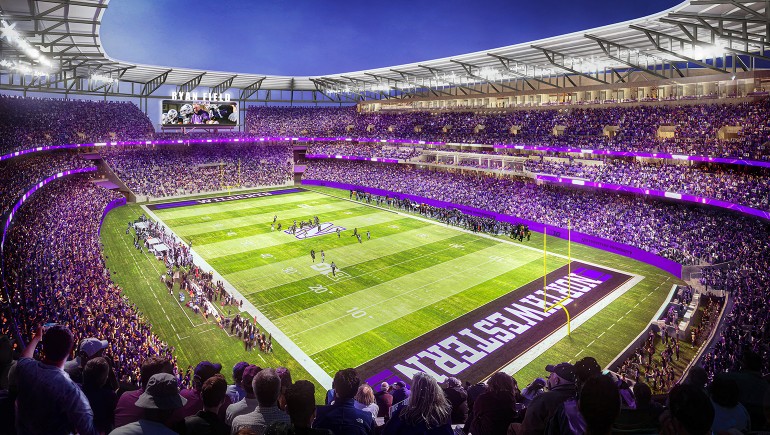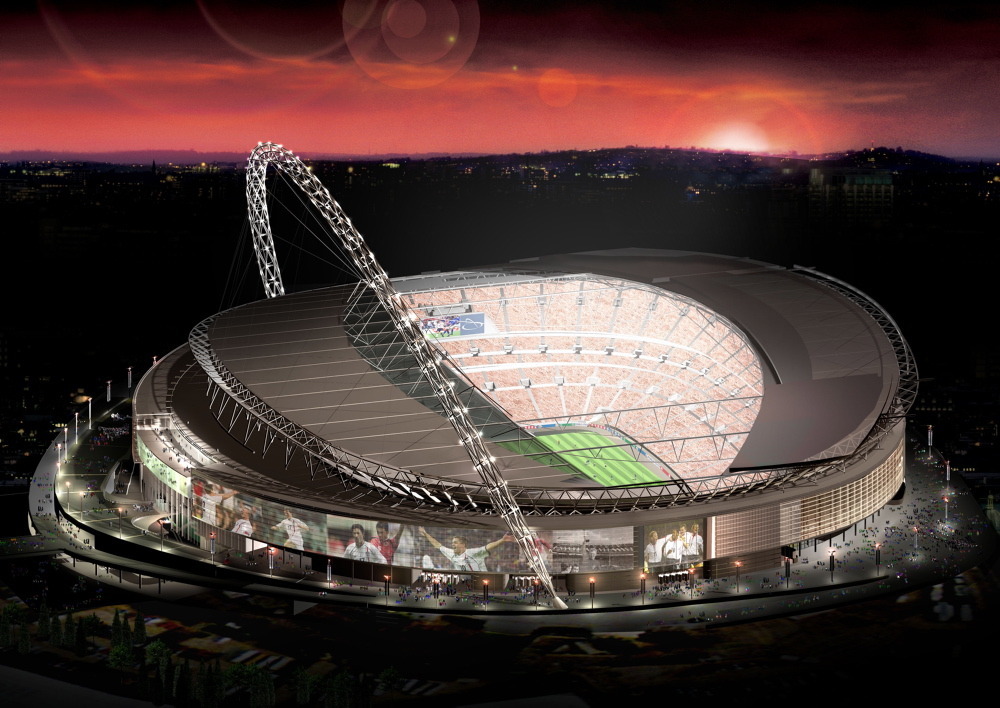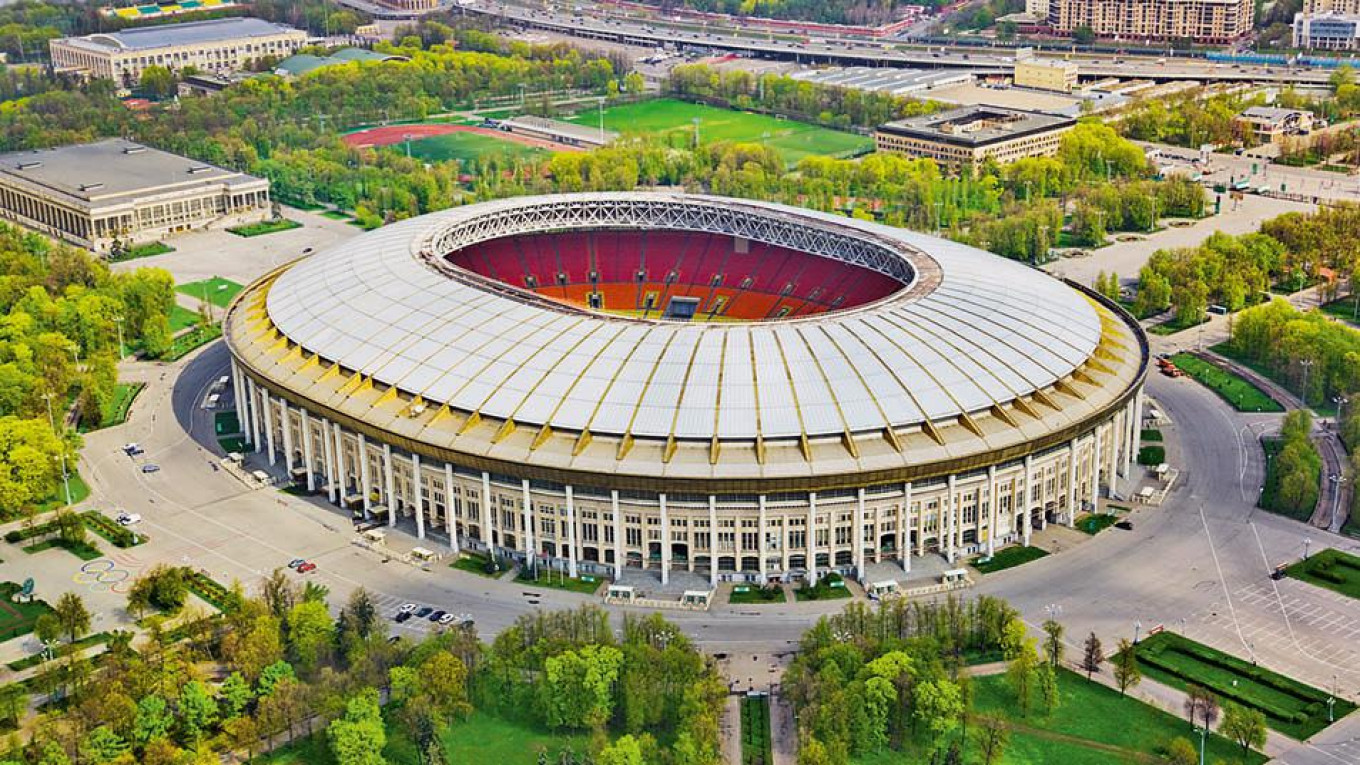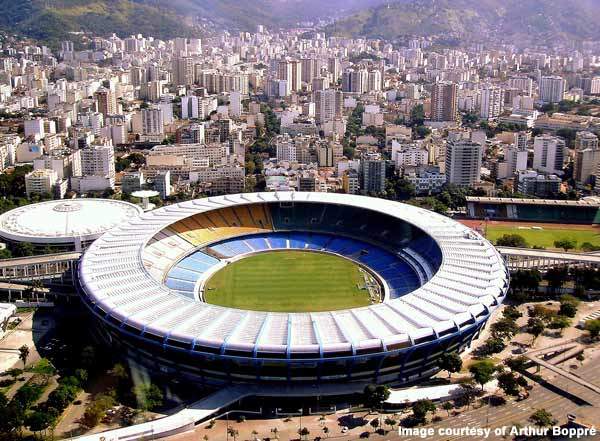top 3 biggest football stadiums

Wembley Stadium,
Wembley Stadium is a world-famous stadium located in London, England. Here's some information about Wembley Stadium:

-
History: The original Wembley Stadium was built in 1923 and was known as the Empire Stadium. It was constructed for the British Empire Exhibition and hosted its first event, the FA Cup Final, on April 28, 1923. The stadium was later extensively renovated and reopened in 2007.
-
Location: Wembley Stadium is situated in Wembley Park, in the borough of Brent, northwest London. It occupies a prominent position near Wembley Arena and the Wembley Park underground station, making it easily accessible.
-
Design and Capacity: The new Wembley Stadium was designed by architects Foster + Partners and Populous. It has a seating capacity of approximately 90,000, making it the largest stadium in the United Kingdom. The stadium's signature feature is its iconic arch, which spans the length of the stadium and is visible from miles away.
-
Usage and Events: Wembley Stadium is primarily known as the home of English football. It serves as the venue for major football events, including domestic cup finals, the FA Community Shield, and England national team matches. The stadium has also hosted several UEFA Champions League finals and the finals of other international football competitions.
Apart from football, Wembley Stadium has hosted a wide range of sporting and entertainment events. It has been used for rugby matches, American football games, concerts by renowned artists, and other large-scale events. The stadium has also been a venue for the Olympic Games, hosting events during the 1948 Olympics and the 2012 London Olympics.
-
Facilities: Wembley Stadium offers modern facilities to enhance the spectator experience. It has multiple tiers of seating, luxury hospitality boxes, restaurants, bars, and retail outlets. The stadium also houses the England national football team's dressing rooms, as well as facilities for other sports and events.
-
Wembley Stadium connected by EE: In 2014, Wembley Stadium entered into a naming rights partnership with mobile network operator EE, resulting in the official name "Wembley Stadium connected by EE." However, it is still commonly referred to as Wembley Stadium.
-
Cultural Significance: Wembley Stadium holds great cultural significance in the United Kingdom. It has been the site of many historic football moments and iconic music performances. The stadium's rich history and grandeur contribute to its status as an emblem of British sporting and entertainment heritage.
It's important to note that while this information is accurate as of my last knowledge update in September 2021, there may have been updates or changes regarding Wembley Stadium since then. For the most up-to-date and specific details, it is recommended to visit the official Wembley Stadium website.
Luzhniki Stadium,
Luzhniki Stadium is a prominent sports stadium located in Moscow, Russia. Here's some information about Luzhniki Stadium
-
History and Significance: Luzhniki Stadium has a rich history and is one of the most renowned sporting venues in Russia. It was originally opened in 1956 and has since hosted numerous significant sporting events, including the 1980 Summer Olympics and the 2018 FIFA World Cup. The stadium has played a crucial role in shaping the sports culture of Russia.
-
Location and Size: Luzhniki Stadium is situated in the Luzhniki Olympic Complex, which is located in the Khamovniki District of Moscow, southwest of the city center. The stadium is positioned on the banks of the Moskva River. With a seating capacity of over 81,000, it is the largest stadium in Russia and one of the largest in Europe.
-
Architecture and Renovations: The original Luzhniki Stadium had a distinctive and recognizable design, featuring imposing exterior columns. In preparation for the 2018 FIFA World Cup, the stadium underwent extensive renovations. The renovation project aimed to modernize the stadium while preserving its historical significance. The most notable change was the installation of a new roof, which transformed the appearance of the stadium.
-
Sporting Events: Luzhniki Stadium has hosted a wide range of sporting events throughout its history. In addition to the 1980 Olympics and the 2018 World Cup, it has been a venue for international and domestic football matches, athletics competitions, and concerts. The stadium has also hosted major UEFA Champions League finals, including the 2008 final between Manchester United and Chelsea.
-
Iconic Moments: Luzhniki Stadium has witnessed several iconic moments in sports history. One of the most memorable events was the UEFA Champions League final in 2008, where Manchester United defeated Chelsea in a dramatic penalty shootout. The stadium's electrifying atmosphere and capacity for large crowds have contributed to many unforgettable sporting experiences.
-
Facilities and Amenities: Apart from the main stadium, the Luzhniki Olympic Complex houses other sports facilities, including an indoor arena, swimming pool, and tennis courts. The complex provides a range of amenities, such as restaurants, cafes, and souvenir shops, to enhance the visitor experience.
-
Legacy and Future Plans: Luzhniki Stadium has left a lasting legacy in Russian sports and continues to be an important venue for major sporting events. In recent years, it has also become a venue for concerts and cultural performances. As part of Moscow's ongoing development plans, there are discussions about further renovations and upgrades to ensure the stadium remains a world-class sports facility.
Please note that while I strive to provide accurate and up-to-date information, details regarding recent developments and events related to Luzhniki Stadium may have changed since my last knowledge update in September 2021.
The Maracana stadiums,
The Maracanã, officially known as the Estádio Jornalista Mário Filho, is a legendary football stadium located in Rio de Janeiro, Brazil. It is one of the most iconic and historic sporting venues in the world. Here's some information about the Maracanã:

-
History and Construction: The Maracanã Stadium was constructed to serve as the main venue for the 1950 FIFA World Cup held in Brazil. Construction began in 1948, and the stadium was inaugurated on June 16, 1950. It was named after the journalist Mário Filho, who played a crucial role in promoting the construction of the stadium.
-
Size and Capacity: The Maracanã has undergone several renovations over the years. Currently, it has an all-seated capacity of approximately 78,838 spectators, although the capacity has varied throughout its history. At its peak, the stadium reportedly held more than 200,000 spectators during the 1950 World Cup final.
-
Architecture and Design: The Maracanã was designed by a team of architects led by Raphael Galvão, Pedro Paulo Bernardes Bastos, Orlando Azevedo, and Antônio Dias Carneiro. It was initially designed as an elliptical-shaped stadium with a distinctive concrete roof that extends over the stands to provide shelter for the spectators.
-
Historic Events: The Maracanã has witnessed several historic moments in football history. The most memorable was the 1950 FIFA World Cup final between Brazil and Uruguay, which is infamously known as the "Maracanazo." Uruguay's victory over Brazil in that match shocked the football world. The stadium has also hosted numerous other major football events, including Copa America matches, domestic league finals, and the FIFA Confederations Cup.
-
Renovations and Upgrades: Over the years, the Maracanã has undergone several renovations and upgrades to modernize its facilities. Major renovations took place in preparation for the 2014 FIFA World Cup and the 2016 Summer Olympics, during which the stadium hosted the opening and closing ceremonies, as well as football matches.
-
Multi-Purpose Venue: While primarily used for football matches, the Maracanã has also hosted other sporting and cultural events. It has been a venue for concerts, religious gatherings, and even Pope Francis conducted a mass at the stadium during his visit to Brazil in 2013.
-
Cultural Significance: The Maracanã holds a special place in the hearts of Brazilians and is deeply embedded in the country's football culture. It has become a symbol of Brazilian football and is revered as a temple of the sport. The stadium's electric atmosphere during matches, with passionate fans known as "torcidas," contributes to its unique aura.
The Maracanã Stadium continues to host important football matches and remains an iconic landmark in Brazil. It stands as a testament to the nation's football heritage and its enduring love for the game.








